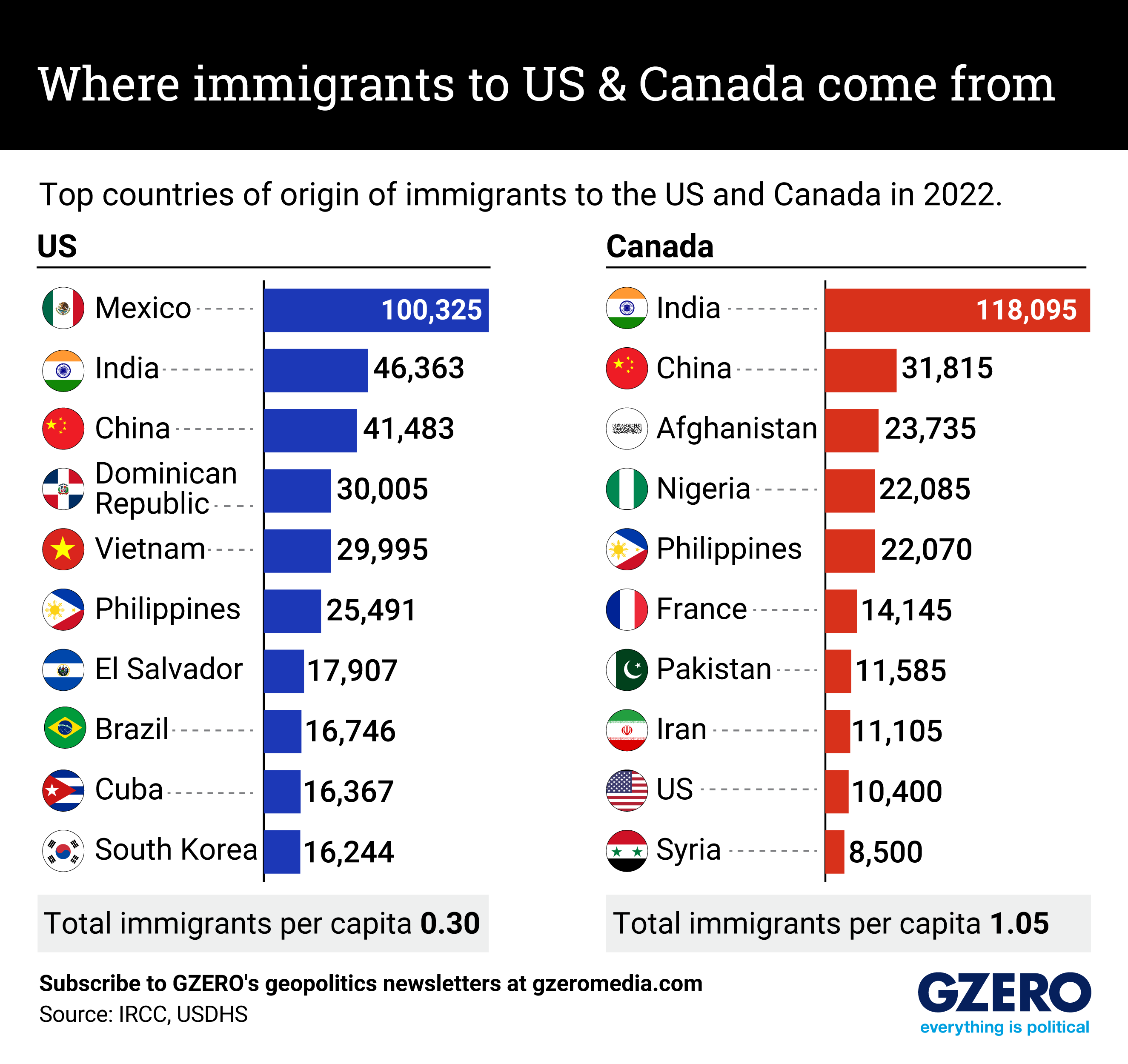November 09, 2023
When it comes to immigration policies, Canada and the United States often go in opposite directions. Ottawa’s per capita total towers over Washington’s – 1.05 to 0.30 – because it strategically positions immigration as a cornerstone of its economic growth plan. In short, it bolsters the labor force.
But last week, we told you that 44% of Canadians (up from 27% last year) now think that immigration levels are too high, the biggest change in sentiment pollster Environics has seen in more than four decades. While this has prompted a new government cap on newcomers, the cap is high: 500,000 a year.
In stark contrast, US immigration policies are subject to the winds of changing administrations, and immigrants are often cast as a strain on the economy, limiting the number of jobs and resources available for Americans.
So where do most immigrants to the US and Canada come from? India tops the list for Canada, with the number of Indians who have become permanent residents in Canada tripling since 2013. India is No. 2 on the US list, beaten by more than twice as many migrants from Mexico.
We look at the top 10 countries of origin for immigrants to both countries.
From Your Site Articles
More For You
Mastercard Economic Institute's Outlook 2026 explores the forces redefining global business. Tariffs, technology, and transformation define an adaptive economy for the year ahead. Expect moderate growth amid easing inflation, evolving fiscal policies, and rapid AI adoption, driving productivity. Digital transformation for SMEs and shifts in trade and consumer behavior will shape strategies worldwide. Stay ahead with insights to help navigate complexity and seize emerging opportunities. Learn more here.
Most Popular
Think you know what's going on around the world? Here's your chance to prove it.
President Donald Trump delivers an address to the nation from the Diplomatic Reception Room of the White House, in Washington, D.C., U.S. Wednesday, Dec. 17, 2025.
Doug Mills/Pool via REUTERS
Less than one day after US President Donald Trump declared a military blockade of sanctioned oil tankers from Venezuela, he addressed the nation during a rare primetime speech – but didn’t talk about Venezuela.
Indian Prime Minister Narendra Modi isn’t necessarily known as the greatest friend of Muslim people, yet his own government is now seeking to build bridges with Afghanistan’s Islamist leaders, the Taliban.
© 2025 GZERO Media. All Rights Reserved | A Eurasia Group media company.
